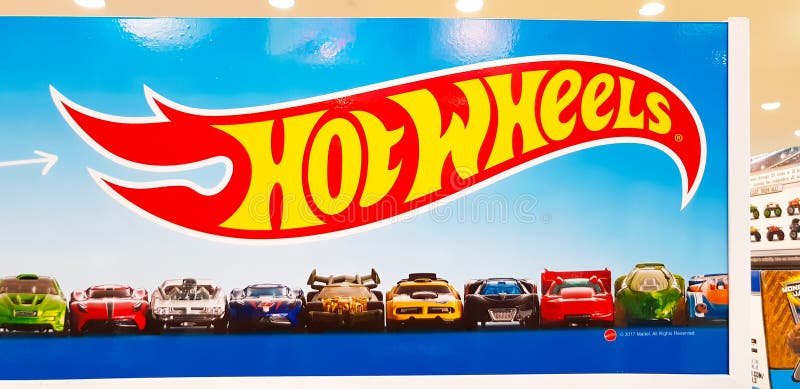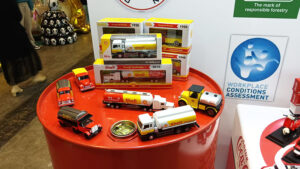-
Table of Contents
- Cultural Impact Of Hot Wheels: From Toy Shelves To Pop Culture And Collector Communities
- Iconic Hot Wheels Series: A Timeline Of Legendary Diecast Car Collections Through The Decades
- Design Innovations: How Hot Wheels Revolutionized Diecast Cars With Spectraflame Paint And Redline Tires
- Origins And Evolution Of Hot Wheels: From 1968 Launch To Global Diecast Car Phenomenon
- Q&A
“From 1968 to Now: Speeding Through Decades of Innovation, Imagination, and Die-Cast Legacy.”
The History of Hot Wheels began in 1968 when Mattel, co-founded by Elliot Handler, revolutionized the toy car industry with the launch of its iconic die-cast vehicles. Designed to outperform competitors like Matchbox, Hot Wheels introduced sleek, customizable designs featuring low-friction wheels and axles for unprecedented speed. The debut “Sweet 16” collection, including models such as the Custom Camaro and Beatnik Bandit, combined vibrant aesthetics with performance, quickly captivating children and collectors. Over decades, Hot Wheels expanded into elaborate track systems, stunt sets, and licensed partnerships with automotive giants, blending realism with fantasy. Its cultural footprint grew through TV shows, video games, and global events like the Hot Wheels Legends Tour, solidifying its status as a multigenerational phenomenon. With over six billion cars produced and a thriving collector community, Hot Wheels remains a cornerstone of play and pop culture innovation.
Cultural Impact Of Hot Wheels: From Toy Shelves To Pop Culture And Collector Communities
Since their debut in 1968, Hot Wheels have transcended their origins as miniature toy cars to become a global cultural phenomenon, shaping play, design, and collector communities across generations. Conceived by Mattel co-founder Elliot Handler as a response to the dominance of Matchbox cars, Hot Wheels introduced a revolutionary approach to toy vehicles. With their sleek, customizable designs, vibrant spectraflame paint, and low-friction wheels, these cars were engineered for speed, complemented by orange plastic tracks that enabled gravity-defying stunts. The inaugural lineup of 16 models, including the iconic Custom Camaro, captured the imagination of children and set a new standard for innovation in the toy industry. This blend of aesthetics and performance not only redefined play but also laid the groundwork for Hot Wheels to evolve into a symbol of automotive culture.
By the 1970s, Hot Wheels had expanded beyond physical toys, embedding themselves into the fabric of pop culture. Animated series like *Hot Wheels: World’s Best Driver* (1970) and *Hot Wheels Battle Force 5* (2009–2011) transformed the brand into a storytelling medium, while collaborations with Hollywood franchises such as *Star Wars*, *Marvel*, and *Fast & Furious* bridged the gap between toys and entertainment. These partnerships underscored Hot Wheels’ ability to adapt to shifting trends, ensuring relevance in an ever-changing market. Video games like *Hot Wheels Unleashed* (2021) further solidified their digital presence, appealing to both nostalgic adults and tech-savvy younger audiences. Through these ventures, Hot Wheels became more than a toy—it became a narrative platform, reflecting and influencing automotive and entertainment trends.
Central to the brand’s enduring appeal is its passionate collector community. What began as childhood nostalgia for many evolved into a serious hobby, with rare models like the 1969 Volkswagen Beach Bomb, valued at over $150,000, commanding astronomical prices at auctions. Mattel cultivated this fervor through initiatives like the Red Line Club, offering limited-edition releases and exclusive memberships. Annual conventions, such as the Hot Wheels Legends Tour, celebrate this culture, uniting enthusiasts to showcase custom designs and historic collections. Online forums and social media groups have further democratized access, enabling global connections and knowledge exchange. This transition from plaything to prized collectible highlights Hot Wheels’ unique intergenerational resonance, blending whimsy with investment potential.
Economically, Hot Wheels’ impact is staggering. With over six billion cars produced and 800 new models annually, the brand’s scalability caters to diverse audiences—from affordable mainline toys to premium collector editions. Collaborations with real-world automakers, such as Tesla and Porsche, blur the lines between fantasy and reality, often inspiring young enthusiasts to pursue automotive careers. Meanwhile, initiatives like eco-friendly manufacturing and electric vehicle-themed sets reflect contemporary societal values, ensuring the brand’s alignment with modern discourse.
Today, Hot Wheels continues to innovate, leveraging augmented reality and interactive playsets to engage new generations. Yet, its core identity remains rooted in the thrill of speed and creativity. As both a nostalgic relic and a forward-thinking icon, Hot Wheels exemplifies how a simple toy can accelerate into a timeless cultural touchstone, leaving tire tracks across playrooms, screens, and collector displays worldwide.
Iconic Hot Wheels Series: A Timeline Of Legendary Diecast Car Collections Through The Decades
Since their debut in 1968, Hot Wheels has revolutionized the diecast car industry, blending imaginative design with cultural relevance to create a legacy that spans over five decades. Conceived by Mattel co-founder Elliot Handler, the brand emerged as a response to the static toy car market, offering sleek, customizable vehicles with patented low-friction wheels that allowed them to speed across tracks with unprecedented agility. The inaugural “Sweet 16” collection, featuring models like the Custom Camaro and Beatnik Bandit, introduced vibrant Spectraflame paint and red-striped “Redline” tires, instantly captivating young enthusiasts and establishing Hot Wheels as a pioneer in dynamic play.
By the 1970s, Hot Wheels began expanding its creative horizons. The 1974 *Flying Colors* series marked a shift toward bolder, more experimental aesthetics, with cars adorned in wild patterns and neon hues. This era also saw the introduction of thematic playsets like the iconic “Hot Wheels City,” which transformed living rooms into sprawling raceways. Meanwhile, collaborations with automotive designers, such as Larry Wood—whose tenure at Mattel began in 1973—elevated the brand’s credibility, blending real-world car culture with fantastical concepts. These innovations ensured Hot Wheels remained a household name even as competition grew.
The 1980s ushered in an era of realism and precision. As muscle cars and imports dominated pop culture, Hot Wheels mirrored this shift with the *Blackwall* series, named for its simple black tires and focus on licensed replicas. Models like the ’57 Chevy Bel Air and Porsche 959 catered to collectors and car aficionados, while the introduction of the *Hot Wheels Classics* line in 1983 paid homage to vintage automobiles. This decade also saw the rise of international markets, solidifying the brand’s global appeal.
As the 1990s approached, Hot Wheels tapped into the thrill of exclusivity with the debut of *Treasure Hunts* in 1995. These limited-edition cars, hidden randomly in packaging and featuring rubber tires and unique decals, became instant grails for collectors. Simultaneously, the brand leaned into pop culture, releasing tie-ins with franchises like *Star Wars* and *Batman*, ensuring relevance amid shifting youth interests.
Entering the 2000s, Hot Wheels embraced nostalgia and multimedia synergy. The *Fast & Furious* series (2001) capitalized on the film franchise’s surge, while *Hot Wheels Legends* (2018) invited fans to submit custom designs for production. Technological advancements further transformed the experience: the 2019 *Hot Wheels ID* series integrated physical cars with a digital app, allowing users to race virtual counterparts.
Today, Hot Wheels continues to innovate while honoring its heritage. The 50th-anniversary *Retro Entertainment* series (2018) revived classic models, and partnerships with luxury brands like Lamborghini and Tesla reflect a commitment to contemporary automotive trends. Through each decade, Hot Wheels has balanced playfulness with precision, ensuring its diecast cars remain not just toys, but cultural artifacts. From living room tracks to global collector showcases, the brand’s journey mirrors the evolution of car culture itself—a testament to enduring creativity and adaptability.
Design Innovations: How Hot Wheels Revolutionized Diecast Cars With Spectraflame Paint And Redline Tires
Since its inception in 1968, Hot Wheels has redefined the landscape of diecast toy cars, merging imaginative design with cutting-edge engineering to create a cultural phenomenon. The brand, founded by Elliot Handler of Mattel, emerged as a bold challenger to the prevailing toy car market, which prioritized realism over excitement. Hot Wheels disrupted this status quo by infusing its vehicles with a spirit of speed, rebellion, and innovation, forever altering the expectations of both children and collectors. Central to this transformation were two groundbreaking advancements: Spectraflame paint and Redline tires, which not only distinguished Hot Wheels from competitors but also set new standards for aesthetic and functional design in the toy industry.
Prior to Hot Wheels, most diecast cars featured muted, matte finishes that mirrored the understated elegance of real-world automobiles. Hot Wheels shattered this convention with the introduction of Spectraflame paint, a vibrant, metallic lacquer originally developed for custom automotive applications. Unlike traditional paints, Spectraflame utilized a translucent formula layered over polished metal bodies, creating a dazzling, mirror-like finish that captured light with unprecedented intensity. This innovation transformed each car into a miniature work of art, with colors ranging from fiery “Hot Red” to iridescent “Electric Blue.” The visual impact was immediate and profound, captivating consumers and establishing Hot Wheels as a brand synonymous with bold, eye-catching design.
Complementing this visual revolution was the development of the Redline tire, a technical marvel that redefined performance in miniature. Named for the thin red stripe encircling each wheel, these tires were crafted from a proprietary synthetic rubber compound that offered superior grip and durability compared to the rigid plastic wheels of competitors. The Redline tires’ low-friction design allowed Hot Wheels cars to achieve remarkable speeds on track sets, enhancing playability and fostering a new era of interactive racing. This focus on kinetic performance mirrored the automotive industry’s own obsession with speed, bridging the gap between toy and aspirational machine.
Hot Wheels’ design philosophy extended beyond aesthetics and mechanics to embrace a culture of customization and experimentation. The brand’s early models, such as the Custom Camaro and Silhouette, featured exaggerated proportions, elongated hoods, and sleek profiles that echoed the hot rod culture of Southern California. These designs not only appealed to children but also resonated with adult collectors, who recognized the artistry and technical ingenuity behind each model. By the 1970s, Hot Wheels had expanded its lineup to include fantastical “Showstoppers” and futuristic concept cars, further cementing its reputation as a pioneer of imaginative design.
Over the decades, Hot Wheels has continued to innovate, integrating advanced materials, digital design tools, and collaborations with automotive giants to maintain its relevance. Yet the legacy of Spectraflame paint and Redline tires endures, symbolizing the brand’s commitment to pushing boundaries. Today, as Hot Wheels celebrates over half a century of excellence, these innovations remain foundational to its identity—a testament to how a toy car can inspire wonder, creativity, and a lifelong passion for design.
Origins And Evolution Of Hot Wheels: From 1968 Launch To Global Diecast Car Phenomenon
In 1968, Mattel, Inc., a company already renowned for its Barbie dolls, revolutionized the toy industry with the launch of Hot Wheels, a line of diecast cars that would forever change the landscape of miniature vehicles. Conceived by co-founder Elliot Handler, Hot Wheels emerged from his desire to create toy cars that were not only visually striking but also engineered for speed and performance—a stark contrast to the static, utilitarian models then dominating the market, such as those produced by Matchbox. Handler’s vision materialized in the “Sweet 16,” the inaugural collection of 1:64-scale cars featuring vibrant Spectraflame paint, intricate chrome detailing, and patented “Redline” tires, distinguished by their red-striped wheels and low-friction axles. These innovations allowed the cars to glide effortlessly across plastic track sets, introducing an interactive, dynamic element that captivated children and set a new standard for playability.
The immediate success of Hot Wheels hinged on its fusion of aesthetics and functionality. While Matchbox prioritized realism, Hot Wheels embraced California’s car culture, drawing inspiration from custom hot rods and muscle cars. Models like the Silhouette and the Twin Mill showcased exaggerated proportions and futuristic designs, appealing to a generation enamored with speed and innovation. By 1969, the brand expanded its offerings to include stunt tracks and loop-the-loop sets, transforming living rooms into miniature raceways and fostering a competitive spirit among young enthusiasts. This emphasis on interactivity not only solidified Hot Wheels’ market position but also ignited a fierce rivalry with Matchbox, prompting both brands to continually elevate their designs.
The 1970s, however, brought challenges. Economic pressures led Mattel to streamline production, resulting in the discontinuation of Redline tires by 1977 and a shift toward simpler, less expensive designs. While this decision initially dampened collector interest, the brand persisted, adapting to trends by introducing licensed vehicles, such as replicas of popular real-world cars like the Chevrolet Camaro and Ford Mustang. This strategic pivot broadened Hot Wheels’ appeal, bridging the gap between fantasy and authenticity.
By the 1980s, Hot Wheels experienced a resurgence as nostalgia for vintage Redline models sparked a thriving collector’s market. Recognizing this, Mattel reintroduced retro designs and launched limited editions, catering to adult enthusiasts while maintaining its core audience of children. The brand further diversified its portfolio with themed series, including military vehicles, space explorers, and movie tie-ins, ensuring relevance amid shifting
Q&A
**1. When were Hot Wheels first introduced, and by which company?**
Hot Wheels were first introduced in 1968 by the American toy company Mattel.
**2. What inspired the creation of Hot Wheels?**
The line was created to compete with Matchbox cars, with designer Elliot Handler aiming to produce stylish, customizable die-cast vehicles featuring sporty designs, vibrant colors, and faster rolling wheels.
**3. What innovation made early Hot Wheels cars unique?**
The original 1968 Hot Wheels featured “redline” tires (with a red stripe) and adjustable “frictionless” axles, allowing cars to roll faster than competitors. They also used metallic “Spectraflame” paint for a glossy finish.
**4. How did Hot Wheels expand beyond die-cast cars?**
The brand grew to include track sets, video games (e.g., *Hot Wheels Unleashed*), animated series (*Hot Wheels: Battle Force 5*), and live events like the Hot Wheels Legends Tour. It also partnered with automotive makers for real-life concept cars.The history of Hot Wheels, launched by Mattel in 1968, reflects a legacy of innovation and cultural resonance. Originating as a dynamic competitor to traditional toy cars, its debut “Sweet 16” line introduced groundbreaking features like redline tires and sleek designs, emphasizing speed and performance. Over decades, Hot Wheels expanded through collaborations with automakers, diverse product lines, interactive tracks, and multimedia ventures, solidifying its status as a global icon. Its enduring appeal spans generations, fueled by collectors’ markets, technological adaptations, and a commitment to creativity, cementing its role in shaping automotive enthusiasm and pop culture while maintaining its position as a cornerstone of the toy industry.







